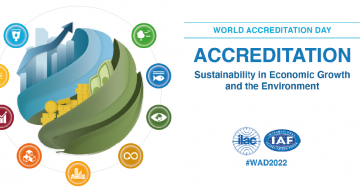The purpose of a risk analysis is to be able to demonstrate that all dangers have been identified, that the related risks have been assessed and that any unacceptable risk has been made acceptable by implementing prevention measures.
The FPS Economy has established that the risk analyses that are carried out in the context of a service do not always meet the legal requirements.
We would like to clarify the details of a risk analysis as well as its content and which elements it should contain.
The framework of the risk analysis
A risk analysis is legally required before a service is made available to the public. This includes for example playgrounds, active and extreme entertainment, permanent theme park equipment and fairgrounds attractions.
With the risk analysis, the service provider (operator or organiser) must prove that the service meets the general safety requirements set forth in Article IX.2 of the Code of Economic Law.
The risk analysis must be conducted prior to the provision of the service. It should also cover the corresponding hazards for the products, such as playground equipment, that do not comply with a European standard.
Process of a risk analysis
A risk analysis contains three parts:
- identifying hazards that can occur during the activity;
- establishing and further specifying the corresponding risks to the safety of users and third parties during the activity.
- assessing these risks.
For all unacceptable risks, prevention measures must be taken. The remaining risks will then be reassessed. This cycle must be repeated until all of the risks are considered acceptable.
The results of the risk analysis as well as the prevention measures are included in a report.
Risk analysis report
The introduction to the risk analysis (general section) must include at least the following elements:
- the document clearly indicates that this is about a risk analysis. The words "risk analysis" should be highlighted. Other terms such as "commissioning" or similar expressions are not acceptable;
- the regulation which applies to the audited service: the complete and correct name of the regulation must clearly appear in the document;
- a clear description of the service for which the risk analysis is being conducted: the type of service, a short description of the service and a full identification of each device, the address where the service is provided and the name of the operator;
- for temporary and/or touring services, such as the operation of some active or extreme recreation events: the date/period on/in which the services are to be offered. For fairgrounds, this statement is unnecessary as a risk analysis, in principle, is only carried out on a one-off basis;
- the date on which the risk analysis is conducted.
If standards were used in order to conduct the risk analysis, these must be mentioned with their versions.
The conclusion of the risk analysis must be clearly indicated.
It is recommended that the company or person who carried out the risk analysis is also mentioned in the document.
Identification of hazards
For some services, the relevant regulations contain a list of the hazards.
For playgrounds, theme park equipment and fairgrounds, the risk analysis must take into account the hazards listed in the corresponding regulations, if these are present during use.
The identification of hazards may be established using a checklist.
- Playgrounds: the hazards are included in the appendix of the Royal Decree of 28 March 2001 concerning the running of playgrounds.
- Theme park equipment: the hazards are included in point 2 of the appendix of the Royal Decree of 10 June 2001 on the operation of theme park equipment.
- Fairgrounds: the hazards are included in point 2 of appendix II of the Royal Decree of 18 June 2003 on operating fairgrounds.
For active and extreme recreational events, the relevant regulations do not provide a list of hazards. The risk analysis report must state what has been checked and for which type of hazard.
If applicable, the risk analysis must also take into account the manufacturer's user instructions. If the instructions are not followed, it should be mentioned in the risk analysis and thoroughly justified.
If FPS Economy inspectors find hazards on site that are not included in the risk analysis, the risk analysis may be rejected.
Identifying the corresponding risks
For every hazard that is present (no matter how minor), the corresponding risk(s) to the safety of users and third parties must be detailed.
The risk must be clearly and unambiguously stated in the document.
Evaluation of the risk
There are various methods for conducting risk analyses.
The service provider or intermediary organisation that carry out the risk analysis is free to choose any method.
The method used for the risk analysis must be mentioned in the report.
The following elements are important:
- the evaluation scale used;
- the values used for the various parameters, such as probability, severity, exposure, with mention of the legend (scale);
- the values used and the end result for the risk must be accurate and realistic;
- the preventive measures taken if the risk is unacceptable;
- the reassessment of the risk after the prevention measures have been taken.

